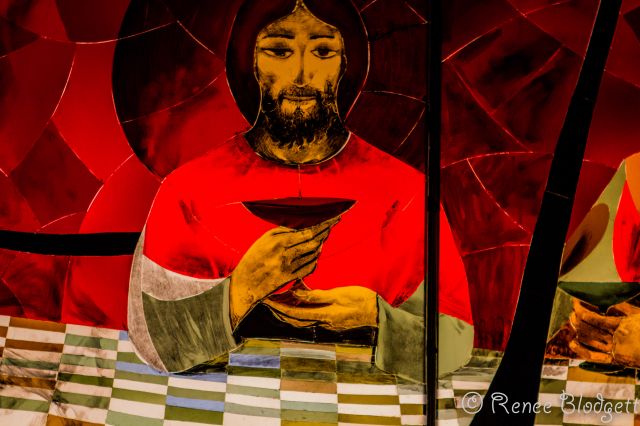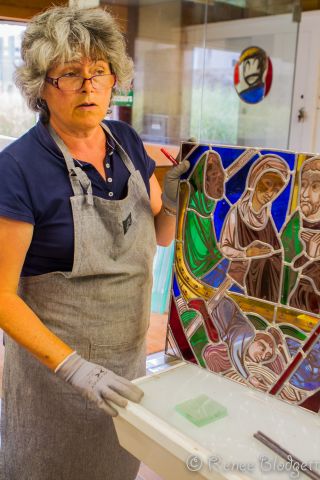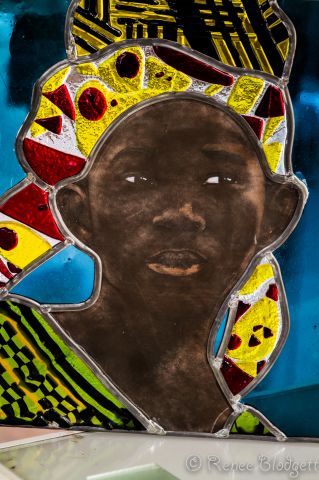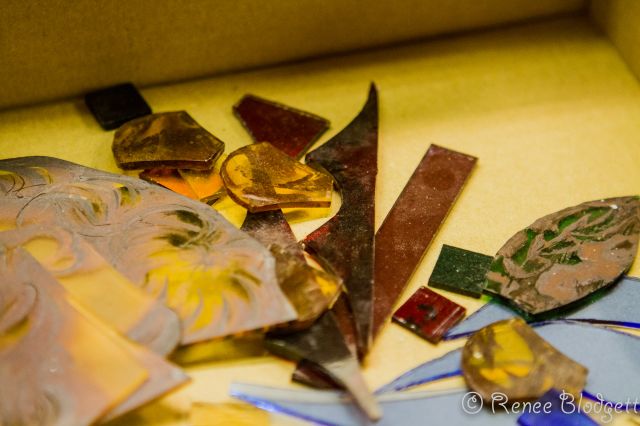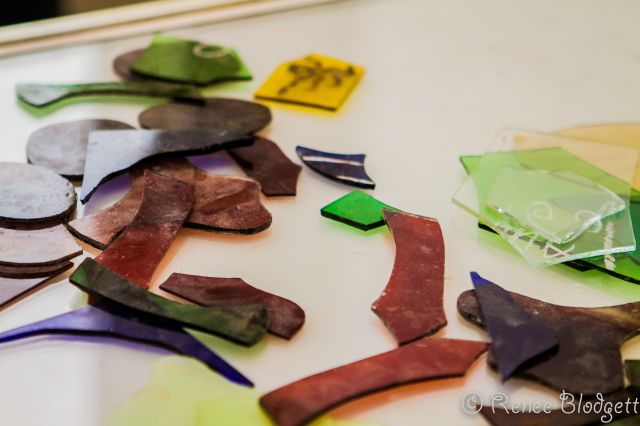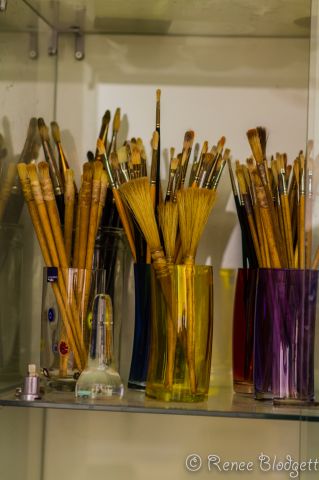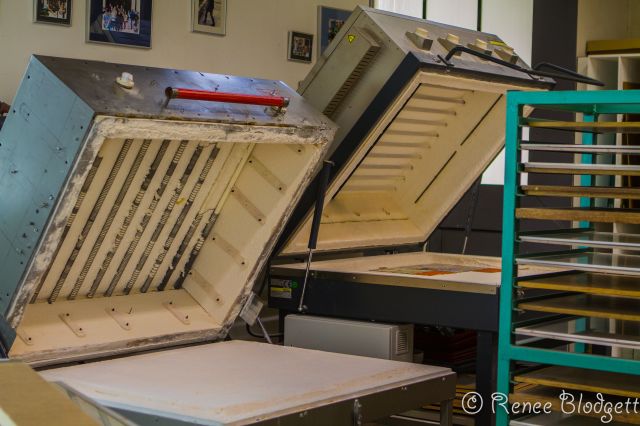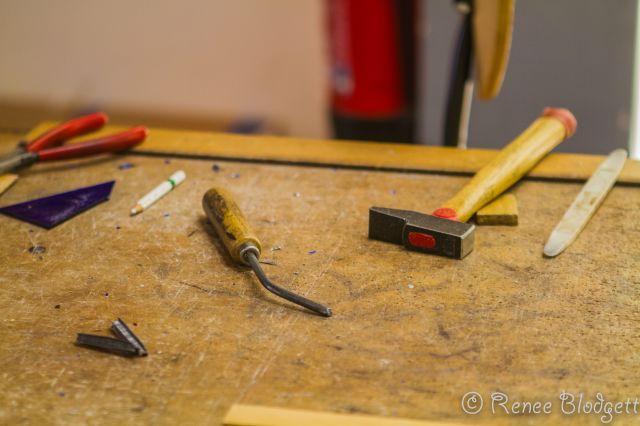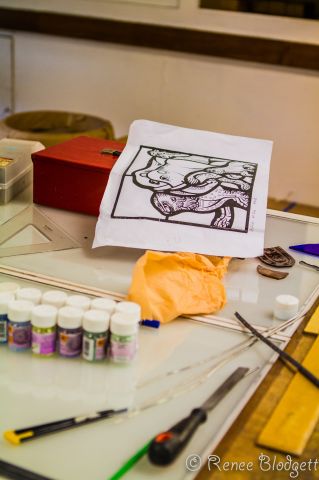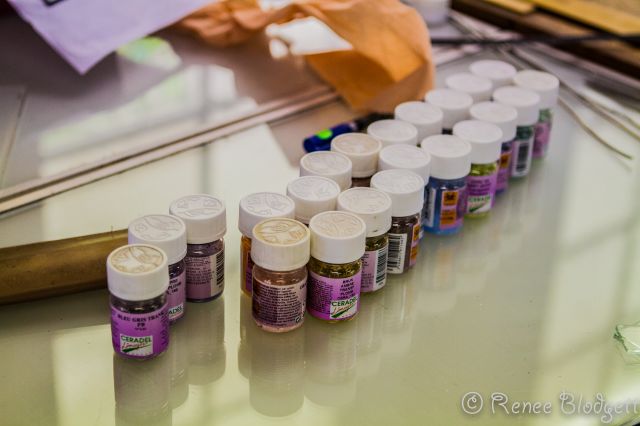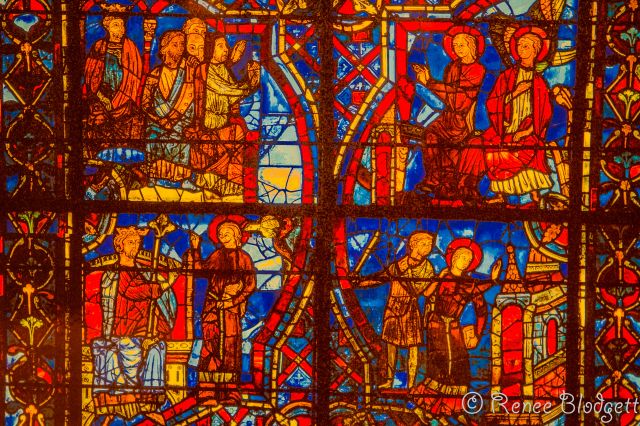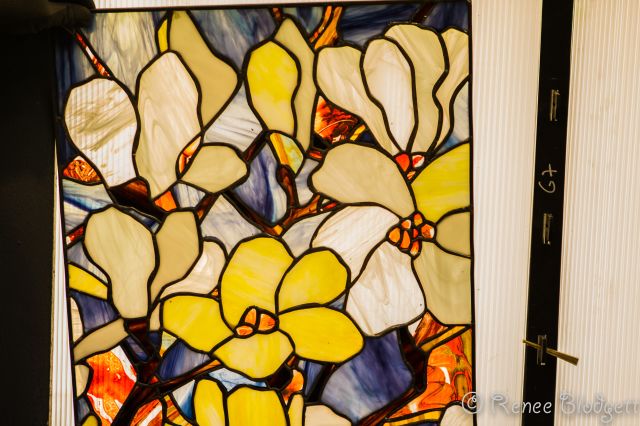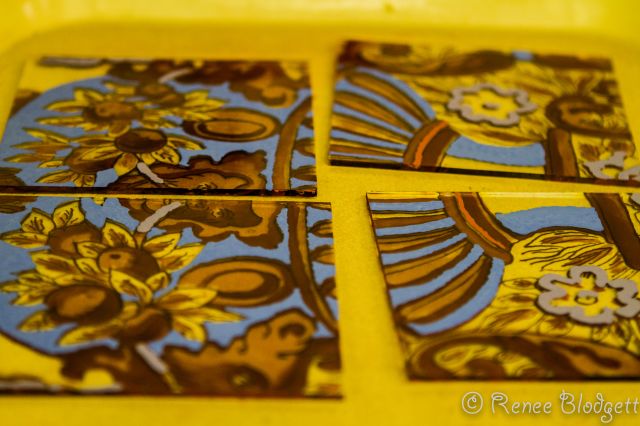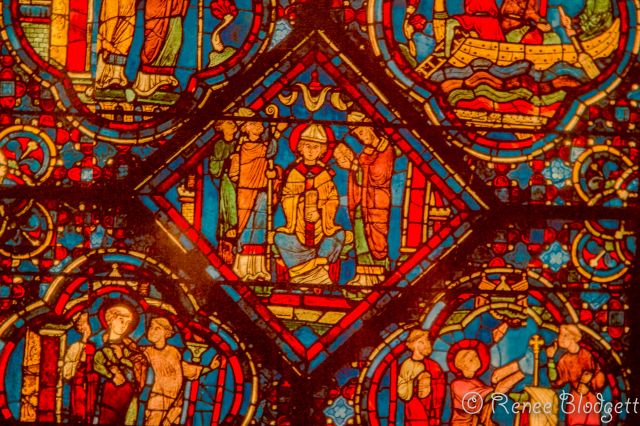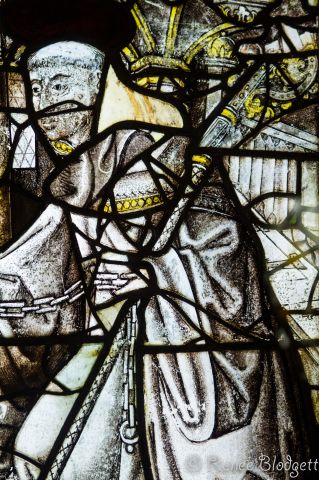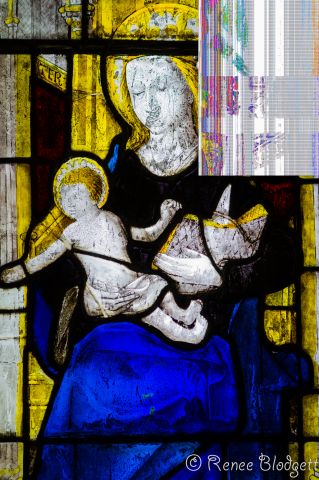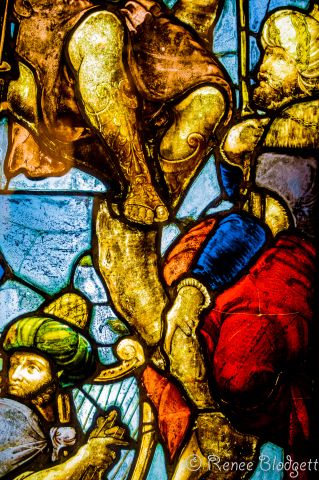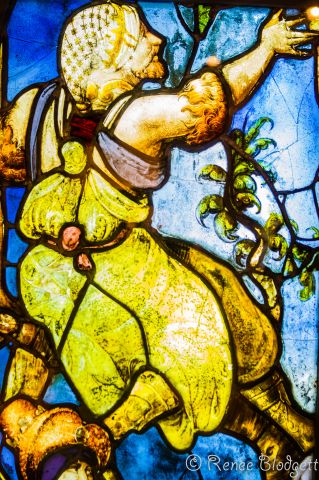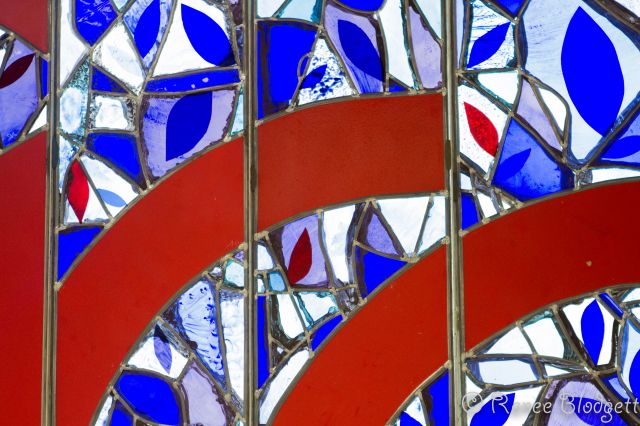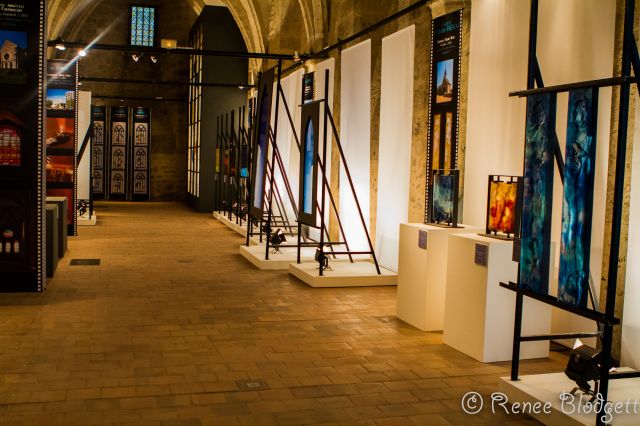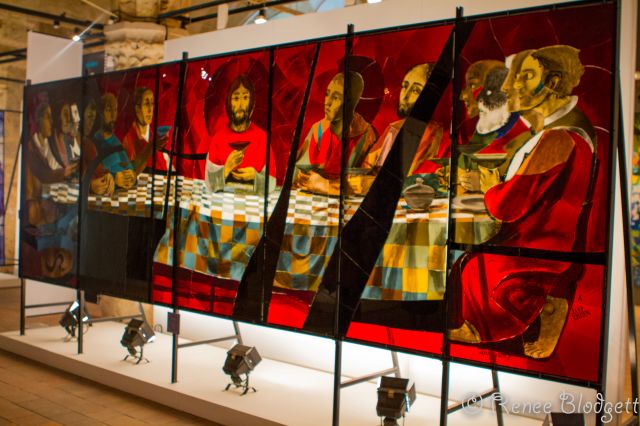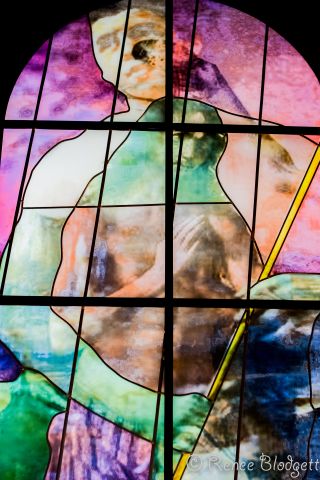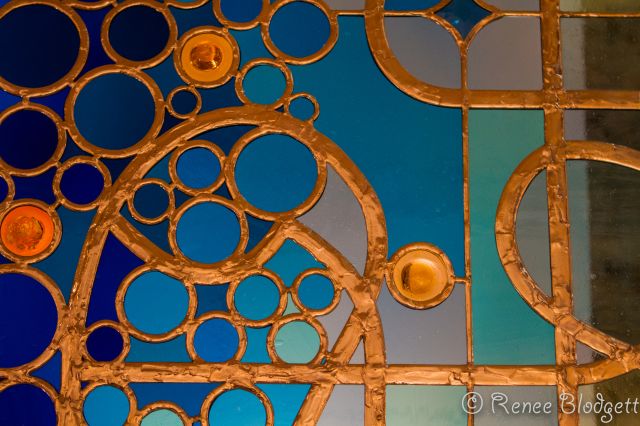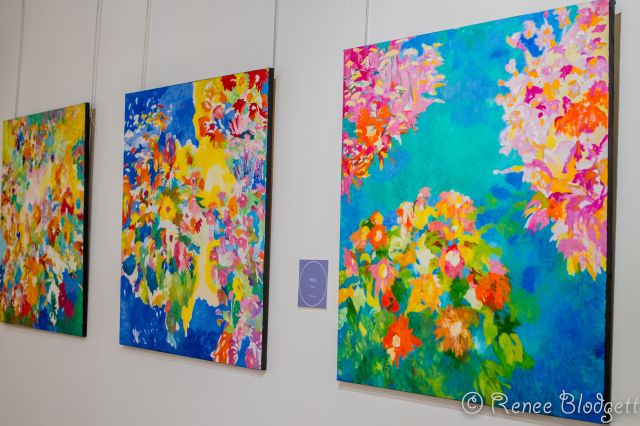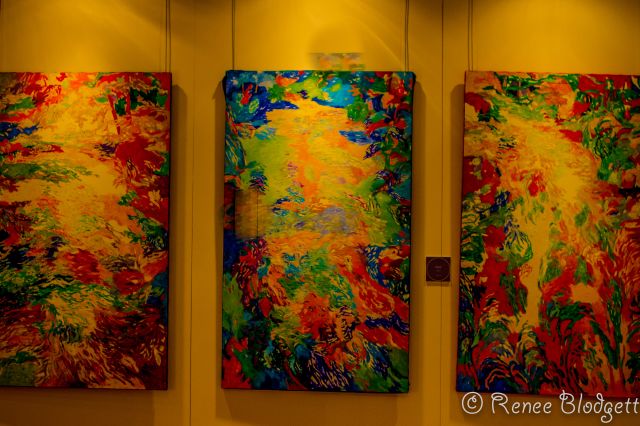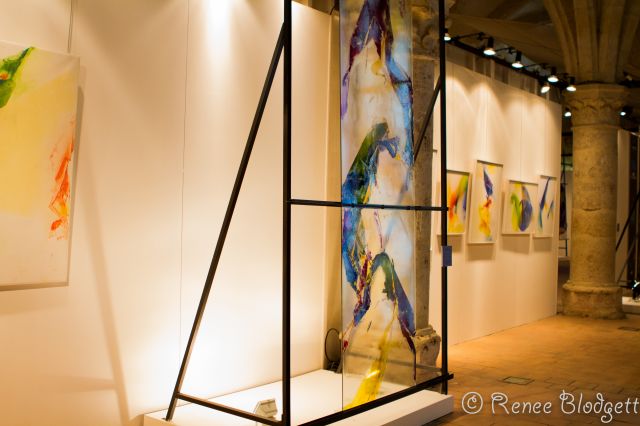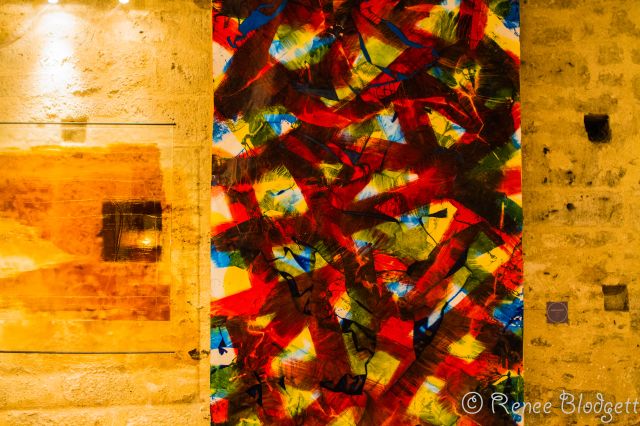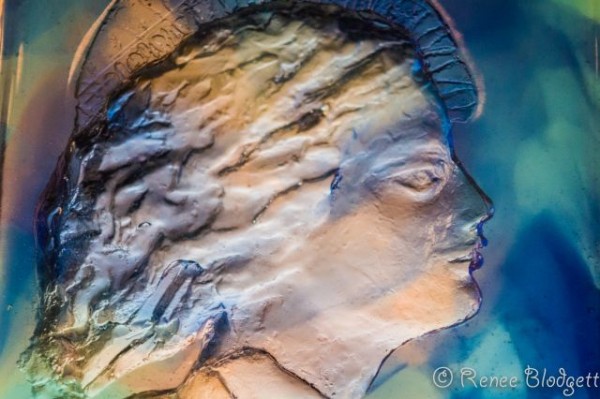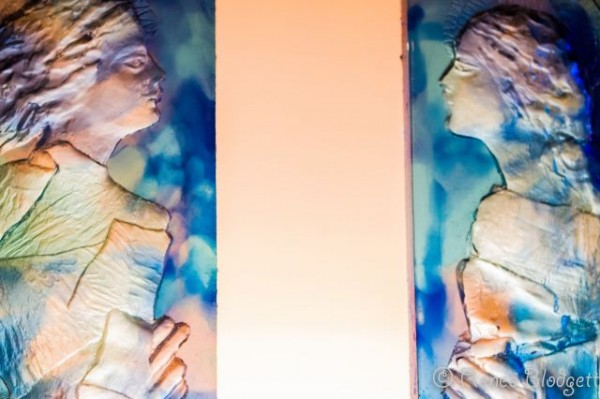If you’re a historian, well read on French culture and religion or traveled extensively, you might just know about Chartres France and its entrenchment in all things Stained Glass. Despite the fact that I had been to Chartres before this past fall trip, the stunningly beautiful cathedral with its thousands of ancient spiritual images inside, is was what I remembered most.
It is logical therefore that a cathedral with 2,600 square meters of stained glass windows from the 12th and 13th centuries, could authentically lay claims on being the leading expert on stained glass creation and restoration, especially from this period.
I was lucky to get a tour of the International Stained Glass Center, the only center of its kind in France. It was once a 13th century Medieval storehouse and today is a listed historical monument. Not only do they offer classes and ongoing education about stained glass, from making your very own stained glass piece of art to becoming a professional stained glass restorer or maker, but they also have regular exhibitions about old and contemporary stained-glass windows.
The building itself has a strong historical past. The center is housed in the Loens Gothic Cellar, which likely dates back to around 1200. During the tour, you can also take in the architecture of the tithe cellar, which has three equal naves, three bays of 21 ribbed vaults supported by 20 consoles on the side walls and 12 columns with capitals.
During the French Revolution, the Loens Hall was named the Maison de Conciliation and turned into a military food store. Following the invention of cinematography in 1895, the cellar became a film theatre showing films by the Lumiere Brothers. In the mid-1970’s, the mayor of Chartres at the time, Marcel Gaujard made the transition from the film center to the International Stained Glass center happen. The collection of buildings, listed as Historical Monuments, belongs to the City of Chartres.
Inside these historical walls, you can learn everything there is to know about stained glass. The instructors can teach you how to create your first piece of stained glass after a week or two. Below one of the instructors shows us a couple of pieces done by students in the beginning class — remarkable!
Jean Marie Braguy, who is one of the best in stained glass restoration masters in France, teaches here. At the school, you can receive a state diploma which allows you to set up your own workshops upon graduation. What was most fascinating was not just seeing the “final product” of early students, although they were beautiful enough to make you want to sign up for a class right away, but seeing all the tools involved used and the step-by-step process that allows the artist to create a stained glass masterpiece.
Frankly, I had never really been that interested in stained glass although I’ve always found it to be beautiful. After my afternoon at the center, I discovered a new passion for the art and was so intrigued afterwards, I did a little research and digging around.
Chartres is essentially the Stained Glass capital. What I didn’t realize is that today, the art of stained-glass window making is still very much alive. Unlike the limitations of so many years ago, there are new tools and procedures to simplify the process, such as fusing, thermoforming and serigraphy. Below are some breathtakingly beautiful examples of some of the stained glass we witnessed in the main center on our tour.
As an art lover and collector, I found it a bit difficult to leave and was a bit surprised by how much the stained glass mesmerized me. Truth be told, I found every new fact fascinating and it occurred to me on more than one occasion, why I hadn’t been introduced to stained glass before. It’s not as if Chartres is the only place where stained glass can be found and yet, as the Big Grandpa of all stained glass, it’s no surprise that the collection here would be the most impressive.
The quirks of the trade were all so new to me, that each and every one I learned created an “aha” moment for me. I learned that brown and yellow depicted in glass could be corrosion, like rust on an iron bar, making the glass look brittle. I learned that the 12th & 13th centuries were the peak of stained glass production, the time when color was in the glass (pot metal glass). This was gothic style and the only color that was used was black paint. In the Middle Ages glass, glass was only made in one color and at that time, color was in the glass itself.
In addition to stained glass from the peak period, I saw more than 50 original Renaissance stained glass windows from the 15th and 16th centuries. In the so called stained glass movement, the “fashion” changed in 14th century with silver stain, and in the 15th century, they started using different paint techniques. I learn from my guide that by the 16th and 17th centuries, they began to use diamond tooling to etch flashed glass (scratch away colors and then add silver back in) and at that time they used sulphuric acid to scratch the glass.
In the 18th century, which saw baroque style (white glass), it marked the end of stained glass movement as we knew it because of the French Revolution and much of it was destroyed. In the 19th century, there was a revival of the technique and it was then that there was a growing interest and effort in renovating and restoring broken and damaged stained glass.
More fascinating quirks of the trade. I learned that puddy was used in 19th century to make glass waterproof. They would use a steel wheel to cut the glass which was a more modern technique since between the 15th and 19th centuries, they still used diamond tools. Heat from hot irons was used to cut the glass in the Middle Ages.
I then learned the most fascinating fact, something I’m surprised I didn’t think of being an artist myself. Color. The use of color. The impact of color….and most importantly, the meaning behind color. Michel Pastoureau is a worldwide expert on the use of color in the Middle Ages. For example, Red = divine and charity or the devil, and both Red and Green depicted richness, power and authority. It was apparently forbidden for bishops to wear green and red in 12th and 13th centuries because they should show humility.
Whenever someone is suffering in a stained glass image, and then they are healed, they will show up in blue and gold, which is rare. In addition to red used in some places, stripes was known to also represent the devil prohibiting Aristocratic people from wearing stripes. Yellow is very difficult color since it can be gold, signifying justice or together with green, which shows betrayal. Green on its own stands for hope.
Below is one of the exhibitions that was on display when we were there in September. There’s a big exhibition on display until 2015 — Painters & Stained Glass Artists in France. It shows 15 years of stained glass restoration in France and all of the glass on exhibit have been made by French painters.
Quite possibly my favorite pieces in the exhibit was the work of Francoise Bissara-Fre — his use of colors, shades and reflections….wow! Need I say more?
An experienced guide for 14 years, Felicite Schuler-Lagier is not only knowledgeable about the history of art, stained glass and the Medieval and Cathedral periods, but knows about the symbolic language of the Medieval ages as well.
Her background is art history and she also teaches Gregorian Chanting. Below is a lovely and very beautiful chant she sang for us, a procession song taken from the year 1,000 that was sung during ceremonies. She says with a smile, “it’s Rythym and binary Rythym so it alternates both Rythyms.” Apparently doctors also use it to heal which didn’t surprise me given how relaxed and happy I felt after hearing her sing. Hopefully you will too!
Details:
International Stained Glass Center
5 rue du Cardinal Pie
Chartres 28000
Normandy France
www.centre-vitrail.org
Be sure to check out our Brittany/Normandy food & wine section (and posts), as well as our general section on Brittany/Normandy. And, of course for the passionate about all things France, we have quite a bit of content in our France section as well as Paris.
Note: My trip was hosted by the French Tourism Board, however all opinions expressed are entirely my own.

Renee Blodgett is the founder of We Blog the World. The site combines the magic of an online culture and travel magazine with a global blog network and has contributors from every continent in the world. Having lived in 10 countries and explored nearly 80, she is an avid traveler, and a lover, observer and participant in cultural diversity.
She is also the CEO and founder of Magic Sauce Media, a new media services consultancy focused on viral marketing, social media, branding, events and PR. For over 20 years, she has helped companies from 12 countries get traction in the market. Known for her global and organic approach to product and corporate launches, Renee practices what she pitches and as an active user of social media, she helps clients navigate digital waters from around the world. Renee has been blogging for over 16 years and regularly writes on her personal blog Down the Avenue, Huffington Post, BlogHer, We Blog the World and other sites. She was ranked #12 Social Media Influencer by Forbes Magazine and is listed as a new media influencer and game changer on various sites and books on the new media revolution. In 2013, she was listed as the 6th most influential woman in social media by Forbes Magazine on a Top 20 List.
Her passion for art, storytelling and photography led to the launch of Magic Sauce Photography, which is a visual extension of her writing, the result of which has led to producing six photo books: Galapagos Islands, London, South Africa, Rome, Urbanization and Ecuador.
Renee is also the co-founder of Traveling Geeks, an initiative that brings entrepreneurs, thought leaders, bloggers, creators, curators and influencers to other countries to share and learn from peers, governments, corporations, and the general public in order to educate, share, evaluate, and promote innovative technologies.

